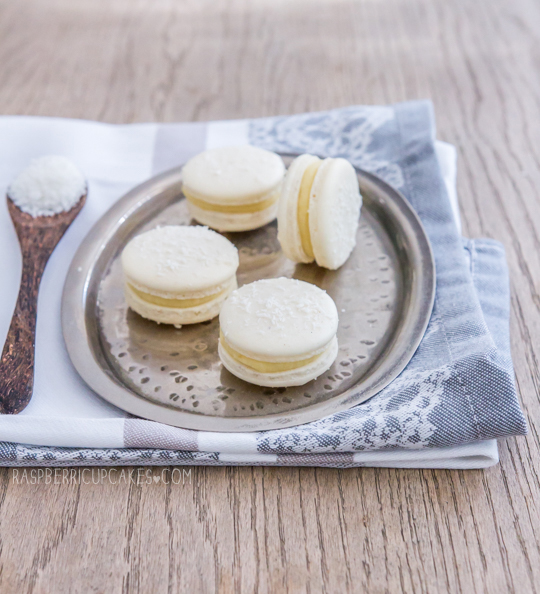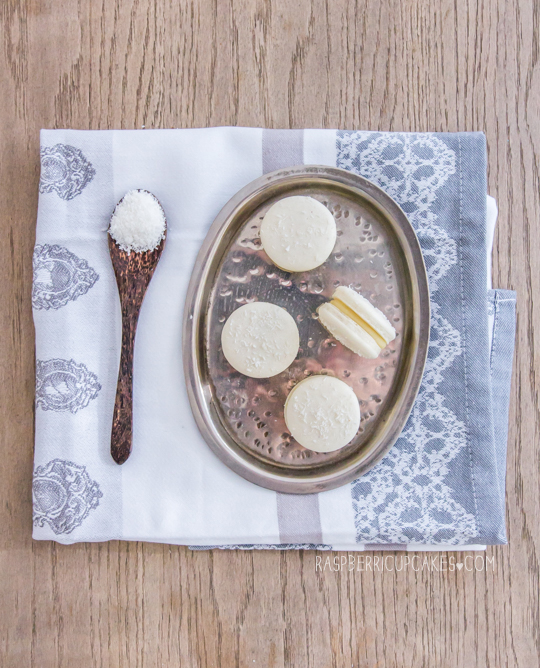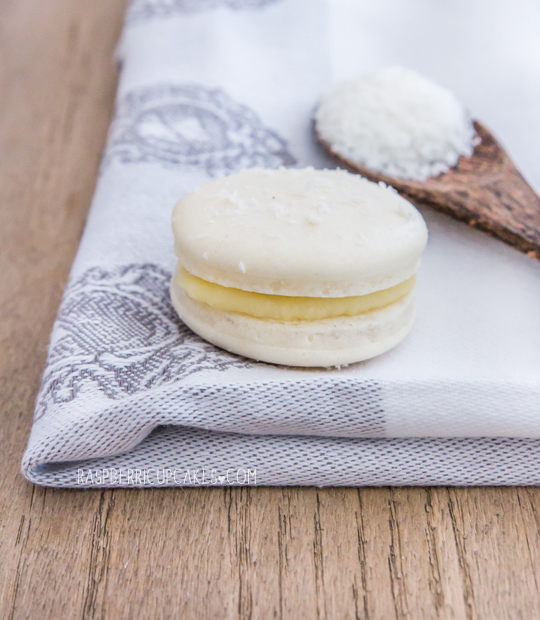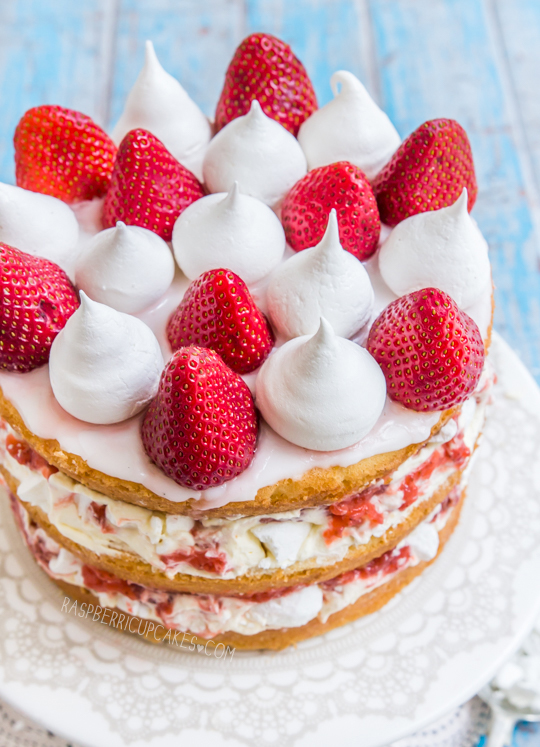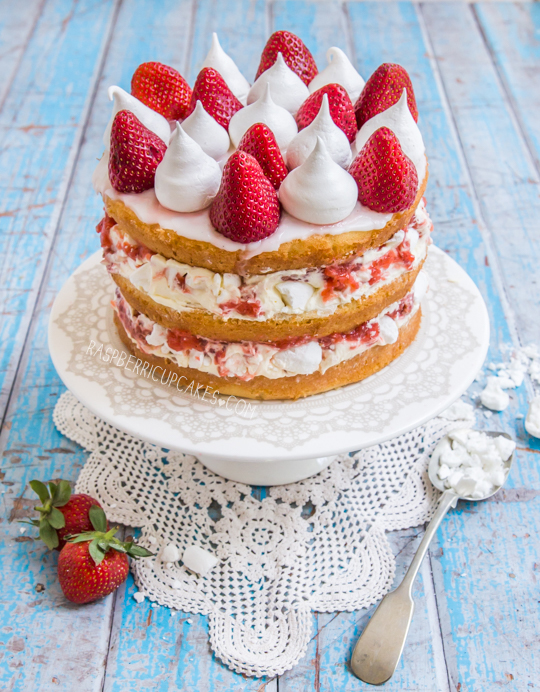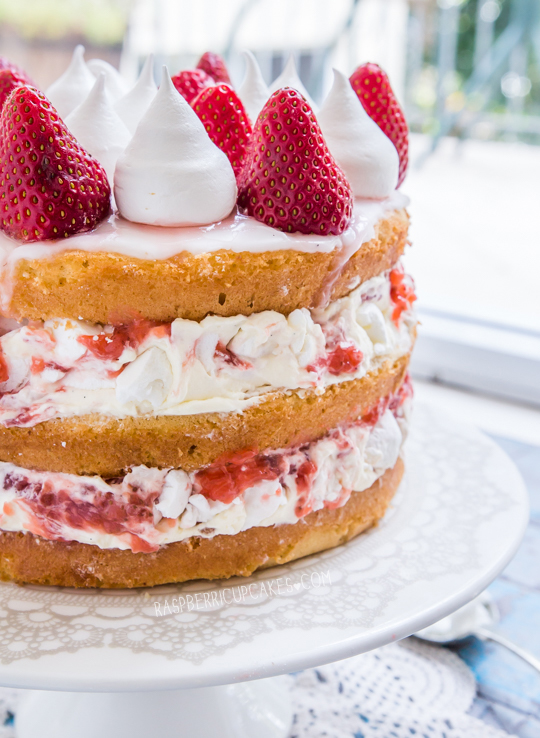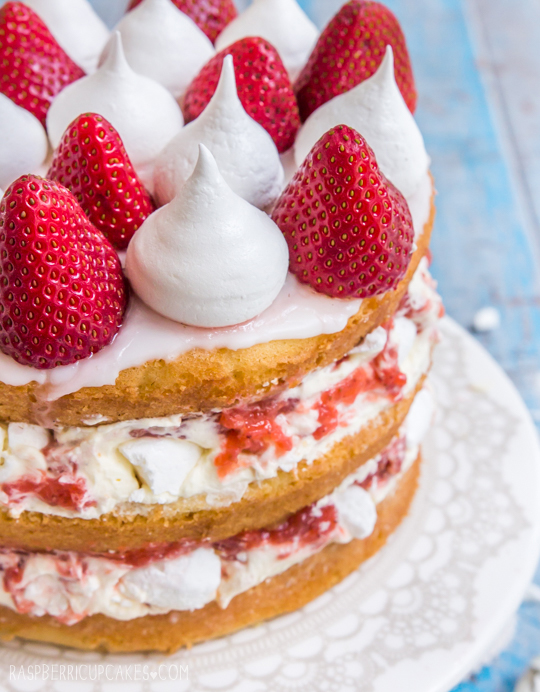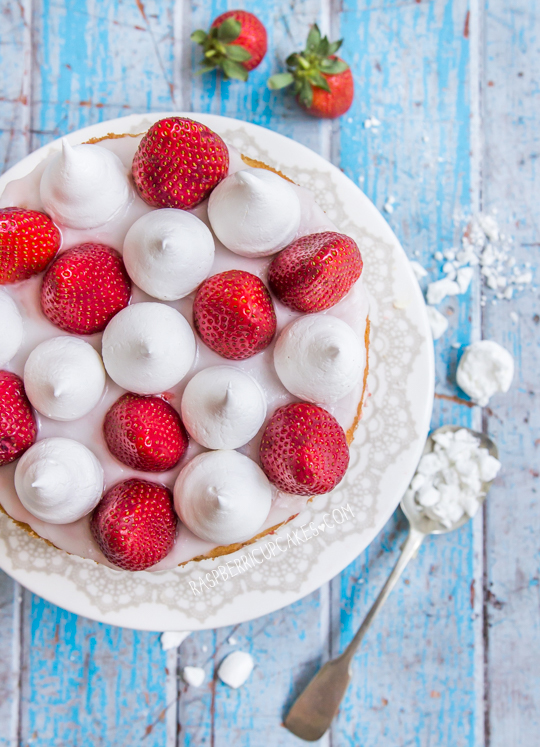Helllloooo! This is just a super quick post to let you know that I'm still alive! Things are just super, super busy. These macarons are my peace offering to you for being so neglectful of my blog recently. Well actually, I wasn't actually being neglectful, I was baking heaps over the last two weekends but everything I made was a complete and utter disaster. Yep I'm a flat out, freaking mess at the moment, and so is my kitchen.
These macarons were made for an upcoming party and are inspired by one of my favourite flavours from Gelato Messina. The ganache is made with lychee puree, and I was meant to add some coconut cream but somehow totally forgot to add it to the mixture. But the coconut on the top of the shell helps to make it for it as it got lightly toasted in the oven. I'm still having super annoying issues with hollow macarons so these were not technically the best but they still tasted great so I wanted to share them with you. I'm pretty sure that it's my oven that causing the issue, not the recipe, since it's the same recipe I've used since I started making macs. Hopefully you'll have better luck than me!
Coconut and Lychee Macarons
(makes 15-20 macarons)
Note: If you are a beginner with macarons read up and practice plain macarons first. BraveTart has lots of useful advice and info on the subject
For the macarons:
100g (3.5oz) egg whites, at room temperature
1/4 tsp salt
110g (about 4oz) almond meal, at room temperature and well sifted
200g (7oz) icing (confectioner's) sugar
50g (1.74oz) caster (granulated) sugar
Dessicated/shredded coconut to sprinkle on top
- Line two baking trays with good quality baking paper.
- Place icing sugar in food processor and pulse for a minute to remove any lumps. Stir in almond meal and pulse for about 30 seconds to combine. (If you don’t have a processor just sift together with a fine sieve.) Sift into a large mixing bowl and set aside.
- Using an electric mixer, beat egg whites and salt in a medium mixing bowl until it reaches soft peaks. With the mixer on high speed, gradually add sugar and beat until it reaches stiff peaks.
- Add meringue to your dry mixture and mix together with a spatula, quickly at first to break down the bubbles in the egg white (you really want to beat all the large bubbles out of the mixture, which is easily done by smearing the mixture on the bottom and side of the bowl with your spatula), then mix carefully as the dry mixture becomes just incorporated and the mixture starts to become shiny again. Take care not to overmix, the mixture should flow like lava and a streak of mixture spread over the surface of the rest of the mixture should disappear after about 30 seconds.
- Place mixture in a piping bag with a 1cm round piping tip. Pipe circles about 3cm wide on your prepared trays, leaving about 3cm space around each one. Tap baking sheets carefully and firmly on the benchtop a couple times to remove any large bubbles.
- Sprinkle a pinch of coconut over the top of each piped shell.
- Leave to dry for about 60 mins, until when you press the surface of one gently it does not break/stick to your finger. This will help prevent any cracking and help the feet to form on the macs. (I find the easiest way to do this is to point a fan at the shells, but make sure you stick or weigh down the baking paper first)
- Preheat your oven to 130-150°C (265-300°F), depending on your oven (fan-forced ovens may need to be set as low as 100°C, it really depends) . You can place the sheet of piped shells on top of an upside-down roasting tray or another baking tray, for better heat distribution.
- Bake for 20-25 minutes, depending on the size of your shells. Carefully test if the base of the shell is ready by gently lifting one and if it’s still soft and sticking to the baking paper, then it needs to bake for a few minutes longer.
- Remove from the oven and cool on the tray for a few minutes, then gently remove from the sheet and place on a wire rack to cool.
For the lychee coconut ganache:
250g (about 9oz) good quality white chocolate, finely chopped
50ml thickened or pure/heavy cream (min 35% fat unthickened) OR coconut cream
Half can (I think mine was a 565g can) of lychees in syrup (lychees well drained and pureed, about 100g puree)
- Place chopped chocolate in a heatproof bowl and melt over a pot of simmering water.
- Heat cream and lychee puree in a small saucepan on medium-low heat until it just comes to the boil.
- Add hot cream mixture to melted chocolate a third at a time (mixture may seize up after you add the first part, but will hopefully melt back down as you add the rest. If not, return bowl to over the simmering water and whisk until smooth)
- Chill, whisking it every 5 minutes to ensure it stays smooth, until the mixture thickens but is still pipable. If mixture is too runny, you can melt in more chocolate, 50g at a time.
- Place in a small piping bag (ziplock bags with a corner snipped off are handy for this), pipe and sandwich between macaron shells.
- Chill macarons in an airtight container overnight to allow flavour to mature. Serve at room temperature.

